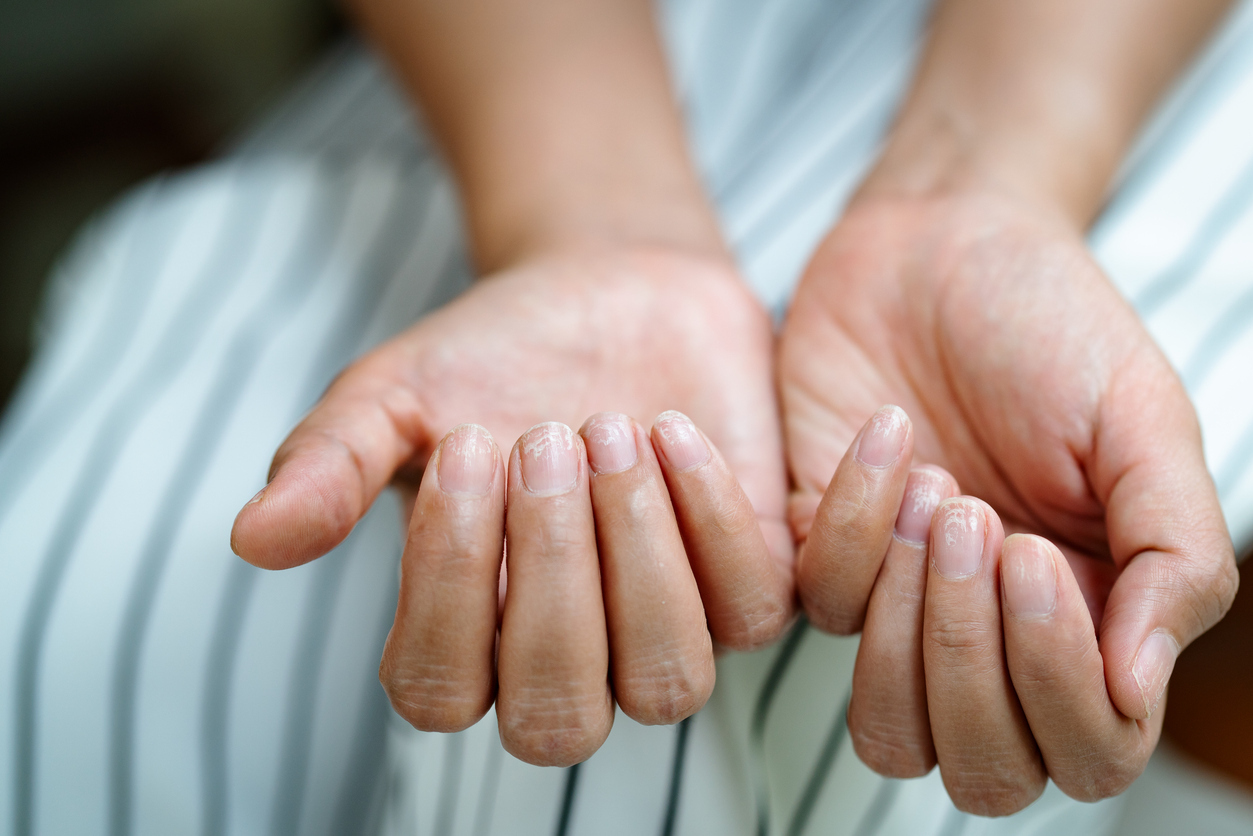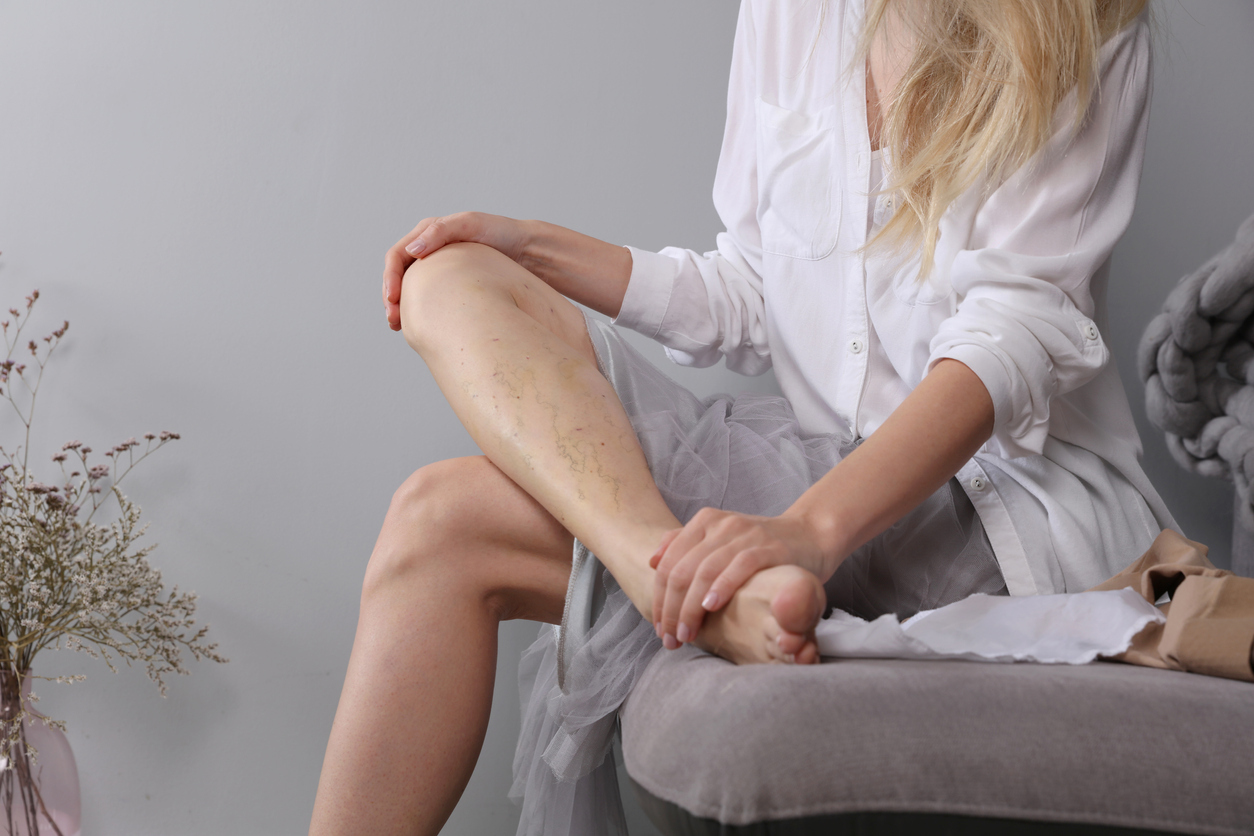4 na mga paraan na sinasabi sa iyo ng iyong balat na ang iyong atay ay nasa problema
Ang mga kondisyon ng balat na ito ay maaaring maging isang tanda ng babala mula sa masipag na panloob na organ.

Never underestimate the importance of your liver. Not only is it your largest internal organ, it's a crucial component of the human body that does tons of work, from digestion to hormone regulation. It makes sense that the liver can send out various warning signals when something is wrong, given that it functions in so many different ways—and some of these signs of trouble can show up on your skin.
Even though your liver is tucked away on your right side, under your ribcage, skin conditions can be a warning sign when something is wrong. "[The liver] plays a significant role in the body's health and processes," explainsLinda Khoshaba, NMD, FABNE, and the CEO and founder of Natural Endocrinology Specialists (NES). "[So], liver problems may manifest on the skin." Read on to find out about four skin conditions that can be a sign of liver disease.
READ THIS NEXT: If You Notice This Around Your Eyes, Get Your Liver Checked.
1 Jaundice

One of the liver's 500+ functions is to make and then release a fluid called bile, which breaks down fats and aids in digestion. The yellowish substance bilirubin is a pigment of bile. When there's a problem with the liver, bilirubin can accumulate and result in a yellowing of the skin, whites of the eyes, and mucous membranes. In addition, your urine can darken. Other symptoms of jaundice can include fever, chills, stomach pain, and light-colored stool.
Conditions such as infection, gallstones, and blood disorders, as well as certain medications, can cause jaundice. But a yellowish appearance can mean your liver is in trouble, especially when it occurs along with other symptoms.
2 Red palms

"The liver plays a huge role in the hormonal regulation process, and fluctuations in the hormonal levels cause conditions like palmar erythema," says Khoshaba. Palmar erythema—also called liver palms and Lane's disease—are red palms potentially caused by a liver condition. According to WebMD, a number of factors can be responsible for red palms, including pregnancy and inherited conditions. But liver disease can cause blood vessels in the hands to become dilated, turning the palms red. (This can also occur on the feet, which is known as plantar erythema.)
So how do you know if you have palmar erythema or just, say, hot and sweaty hands? WebMD cites several ways to tell the difference. If both of your palms (or feet) are red, the area fades when you press on it (blanches), or your palms feel warm, these can be signs of palmar erythema.
RELATED: For more up-to-date information, sign up for our daily newsletter. ae0fcc31ae342fd3a1346ebb1f342fcb
3 Makating balat

While itchy skin is commonly associated with problems like allergies, insect bites, and even dust mites, it can also be caused by increased levels of bile salt collecting under the skin. Itching that gets worse at night may be a sign that the condition is liver-related.
"Some people may itch in one area, such as a limb, the soles of their feet, or the palms of their hands, while others experience an all-over itch," according to the Mayo Clinic. "Itching linked to liver disease doesn't generally involve rash or skin lesions. However, you can develop visible irritation, redness, and infection due to excessive scratching."
Also known as pruritus, itchy skin caused by liver disease "tends to be generalized, predominantly affecting limbs and in particular palms and soles," states the British Journal of General Practice, and is "usually exacerbated by heat (including hot baths), menstrual period, hormone replacement therapy, early pregnancy, and contact with wool."
4 Spider veins

"Spider angioma [are] clustered blood vessels close to the surface of the skin," says Khoshaba, noting that this can be an indication of cirrhosis. Cirrhosis is a scarring of the liver, caused by different types of liver disease.
Since the liver is crucial to the processing of blood that leaves the stomach and intestines, the presence of scar tissue disrupts the process and slows down the flow of blood, causing pressure. This can create the appearance of spider-like veins or red spots on the nose and other parts of the skin, as well as the appearance of bruises.
Other conditions can cause spider veins, such as injury or extended periods of standing. But if you notice the appearance of spider veins and additionally "feel weak, unusually tired or bloated, or if your skin or eyes appear yellow, you should see your doctor," according to Healthline.
READ THIS NEXT: Kung naramdaman mo ito sa gabi, kailangan mong suriin ang iyong atay, sabi ng mga doktor .

Ang ahente ni Rock Hudson ay nagpakasal sa kanya sa kanyang kalihim upang mapanatiling lihim ang kanyang sekswalidad

Tinatawag ni Kourtney Kardashian si Kim na "makasarili" at "egotistical," mga hakbang pabalik mula sa pamilya
